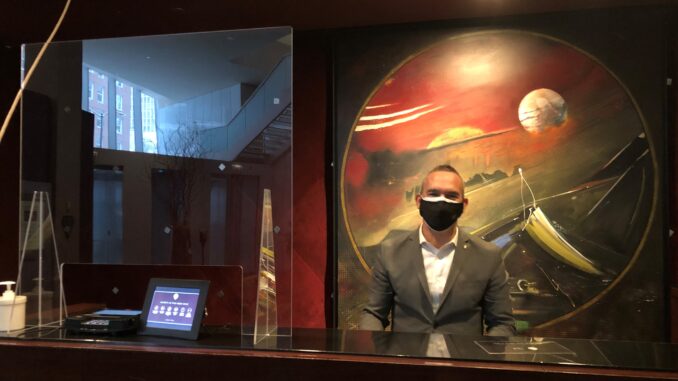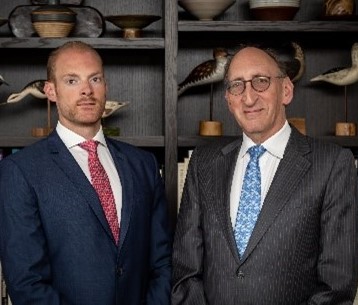
By Larry and Adam Mogelonsky - 2.2.2021
Channel distribution for hotels was chaotic prior to the pandemic and it will be just as cumbersome once recovery begins in earnest. This is entirely due to COVID-19 whereby new guest behaviors and travel needs have inevitably led to new methods and channels for finding accommodations.
Indeed, we’ve already witnessed the OTAs (primarily Booking, Expedia and all of their subsidiaries) make huge gains in search share in 2020 while Google Hotel Search is rapidly becoming the meta-travel resource of choice. But while there are a bevy of well-established automation tools for everyone in the industry to achieve rate parity, what’s deeply troubling now is the wide disparity across all channels for how a hotel’s story is told due all the pandemic-related disruptions.
Similar to rate parity, consistency in how a hotel’s story is told – that is, its USP, key facts, images, Covid safety standards, facility hours of operation and so on – across all channels is what’s described as content parity.
As customers start surging back onto their favorite hotel search and booking websites, attaining content parity may be the difference between a booking at your hotel and a customer going to the competitor where they feel greater assurance in the product presentation. With so much focus nowadays on automation as a means of boosting team productivity while staying lean, the next step to take in early 2021 is to address content parity through the use of a fully integrated distribution system.
Why Content Parity is Critical Right Now
While researching the issue of content parity, we interviewed Andreas Posmeck, the CEO of GIATA, a pioneer in the digitization of the travel industry that has been working since 1996 to deliver uniform information distribution to tour operators, OTAs, GDS and search engines. More recently, the company has launched a product for hotels that allows revenue managers or marketers to seamlessly disseminate content to all third parties without the need for hours upon hours of manual entry by using a universal property identification code.
“In a time when traveler confidence was high and there wasn’t a deluge of fear over a novel airborne virus (also known as the year 2019), a hotel could get away with letting minor updates to its website and third-party webpages slide in favor of more pressing tasks,” said Posmeck. “Now, in 2021, there’s much more supply than demand, so hotels must be present on as many websites as possible to reach customers, and all channels need to be kept in total alignment to not compromise traveler confidence any further.”
To recap, let’s go through some of the content updates a hotel may need in the year ahead:
- Detailed descriptions of onsite Covid safety protocols (which will also work to decrease average voice call length as guests opt to speak with a live agent for reassurance)
- Images showing the latest renovations, branding and Covid safety features
- New hotel name, rebranding or post-Covid property reopening date
- New room types, product tiers or in-room amenities, while also ensuring that these conform to each third party’s internal system of locked categories
- Flexible cancellation and refund policies
- What onsite facilities or services have reopened as well as their hours of operation
- F&B menus including touchless ordering options
- Explanation of any other contactless technologies set up to protect guests
Saving Your Team Time
In other words, a lot has changed for the average hotel in the past 12 months. Manually updating content to reflect these changes on all third-party websites where you own your hotel’s presence is a slog. And then, you still have to worry about all those other third parties you don’t work with directly who are pulling inventory from wholesalers, likely containing outdated and inaccurate information about your hotel.
Keeping it all fully up to date can thus quickly become a full-time job. Some organizations can afford to have someone act as a designated third-party content coordinator, but most can’t. In a period where hotels need to keep teams lean to survive, you don’t have the resources for this task and automation is thus instrumental for this continuous updating process.
Content is Confidence
All statistics from the pandemic reveal just how important it is to keep Covid safety measures as current as possible. If a user isn’t completely reassured that your hotel is taking the matter seriously, they’ll stay somewhere else. If they are confused about what onsite amenities are open or still closed, they’ll stay somewhere else. If your written content is mistranslated into a customer’s native tongue, you guessed it, they’ll stay somewhere else. That’s just how business works in the post-pandemic world.
But bean counters being bean counters as we hoteliers often are, any piece of tech has to produce tangible results in the near-term. Aside from the time savings from deploying a content distribution system, during the demo of GIATA, Posmeck also showed off an ROI calculator whereby all it would take is a handful of extra room nights per year to break even. After all, what good is your latest FF&E upgrade or full-property renovation totaling millions of dollars if no one can see it online in advance of their stay?
Looking Ahead to Recovery in Q3 2021
It all comes down to optimizing TRevPAR – the total revenue per available guest which includes rooms, F&B, spa, golf, activities, gift shop and so on. What Posmeck explained during our discussion was all the money that is being left on the table by hotels from not having the most up-to-date information on display across the multitude of cyberspace, both in terms of securing room reservations as well as prearrival ancillary revenues. For example, if someone knows the spa has reopened at the time they are booking, then they will be much more likely to schedule an appointment or, at the very least, be primed for a cross-sell at a later time.
Then there’s the surge we are anticipating once international travel throttles back up to full speed in Q3 and Q4 2021. But what if, for instance, you are still positioning your hotel or resort as one that’s close to a city center when customers, who still have a lingering lack of trust, want to be told about how secluded your accommodations are? For this, you need to be nimble in getting all your revised messaging out there as soon as possible and accurately translated into the right language because having outmoded information will prevent guests from selecting your property versus a competitor.
As is often said, there are the problems you see and the ones you don’t see. Content parity may fall in the latter camp but that doesn’t mean it isn’t any less important a consideration in your long-term plan. The back half of 2020 was spent solving numerous Covid-related problems that we all knew we had. Spend Q1 2021 investigating how content parity will help you build occupancy for a healthy financial forecast in the years ahead.

Larry and Adam Mogelonsky represent one of the world’s most published writing teams in hospitality, with over a decade’s worth of material online. As the partners of Hotel Mogel Consulting Limited, a Toronto-based consulting practice, Larry focuses on asset management, sales and operations while Adam specializes in hotel technology and marketing. Their experience encompasses properties around the world, both branded and independent, and ranging from luxury and boutique to select-service. Their work includes six books “Are You an Ostrich or a Llama?” (2012), “Llamas Rule” (2013), “Hotel Llama” (2015), “The Llama is Inn” (2017), “The Hotel Mogel” (2018) and “More Hotel Mogel” (2020). You can reach Larry at [email protected] or Adam at [email protected] to discuss hotel business challenges or to book speaking engagements.
This article may not be reproduced without the expressed permission of the authors.
Are you an industry thought leader with a point of view on hotel technology that you would like to share with our readers? If so, we invite you to review our editorial guidelines and submit your article for publishing consideration.
